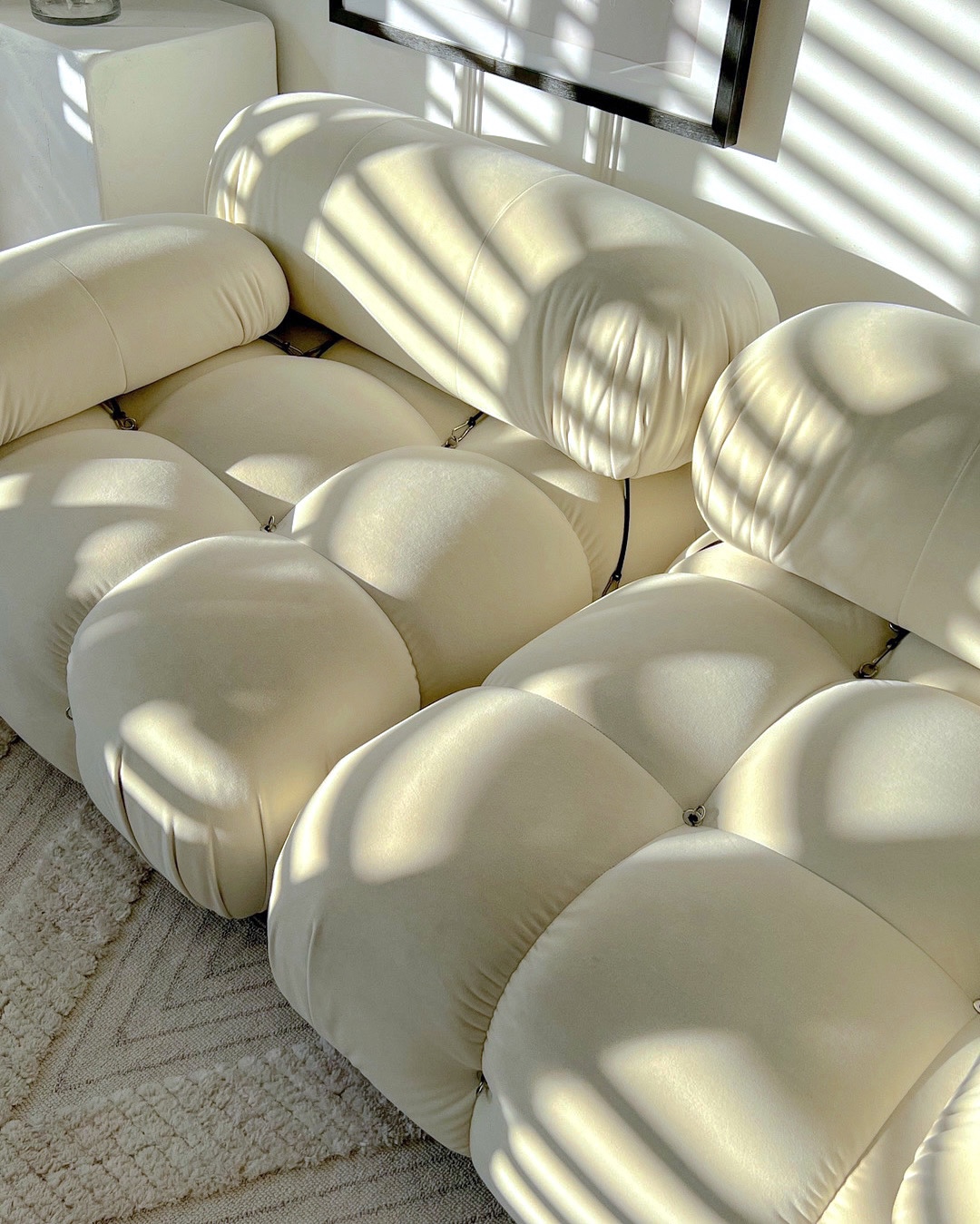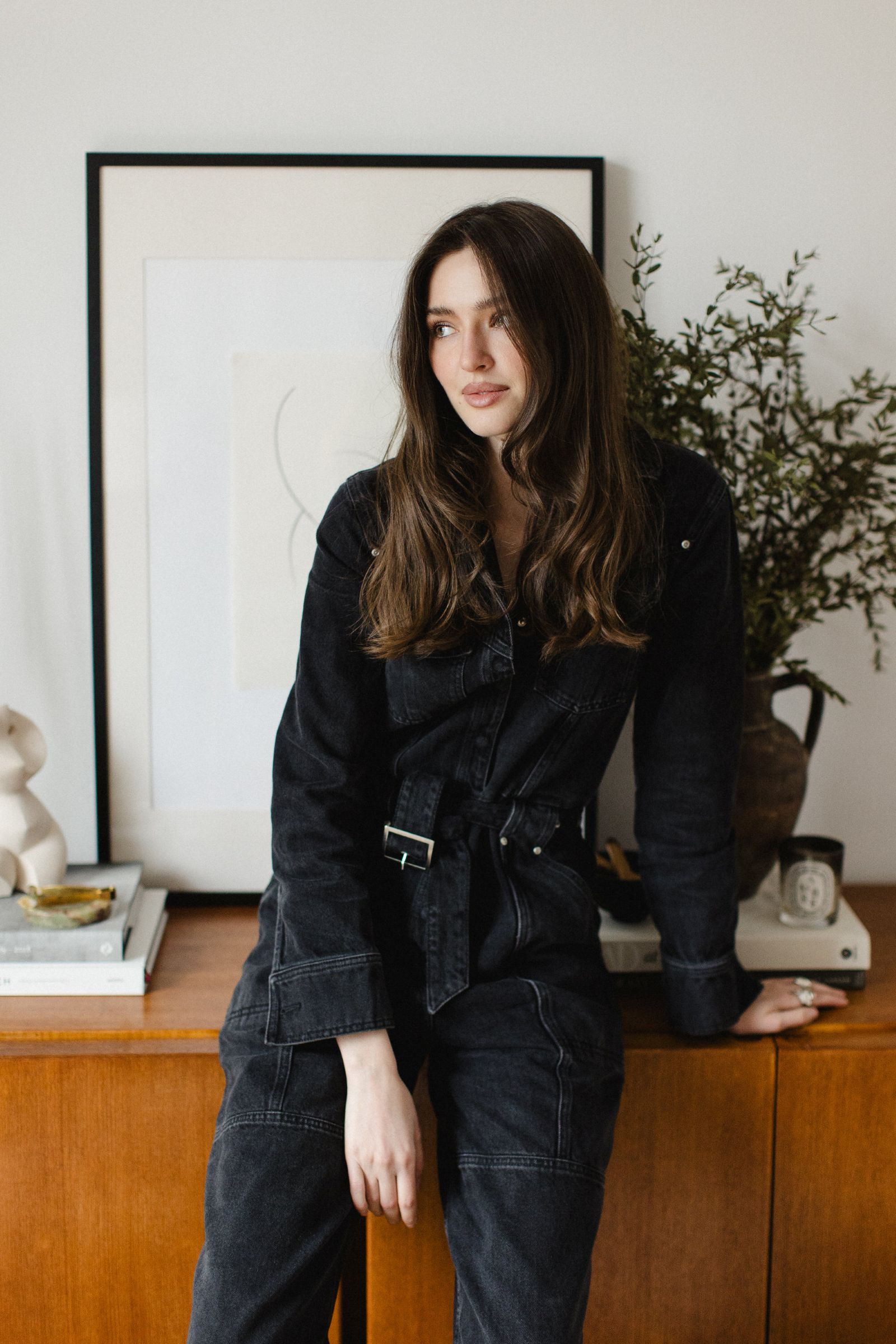
As the crisp air of winter settles in, a quiet transformation begins to unfold in our homes. The once light and airy spaces of summer become more intimate, wrapped in a soft, enveloping warmth that invites us to pause and linger. Winter interiors, however, do not have to yield to the predictable comfort of a thick duvet or the heavy presence of traditional, rustic decor. Instead, there is a way to design for warmth that doesn’t compromise the sleek, modern aesthetic that so often defines our tastes. By embracing sculptural forms, deep moody hues, and careful material choices, we can create spaces that offer both cocoon-like comfort and a refined sense of style, without sacrificing the minimalism and elegance that modern interiors so often celebrate.
The art of creating warmth in winter interiors lies not in the excessive or the overindulgent, but in subtlety and restraint. When one thinks of warmth, images of soft, plush textures, heavy wool throws, and sprawling sofas often come to mind — but these are not the only ways to embody a sense of heat in a space. Instead, warmth in modern interiors can be achieved through more deliberate means, where colour, texture, and form interact in a dynamic yet controlled manner.
At the heart of winter’s warmth in interiors lies an understanding of the emotional resonance of colour. In the winter months, light diminishes, and the natural world becomes more muted, with bare trees and grey skies stretching above us. It’s no surprise that the palette of winter design favours deep, enveloping hues: charcoal greys, midnight blues, and forest greens. These tones echo the natural environment outside while offering a grounding and nurturing effect. The allure of moody colours in winter is undeniable, but it’s essential to balance these darker shades with moments of contrast — the gentle gleam of brass, the tactile softness of velvet, or the subtle shine of lacquered surfaces. These contrasts not only brighten the space but also provide the sharp, clean lines that a modern design ethos demands.
Sculptural elements become indispensable when creating warmth without compromise. Unlike the utilitarian furniture often associated with minimalism, sculptural furniture adds character and charm without sacrificing elegance. A chair with curved, organic lines, or a side table that feels more like an art object than a mere functional piece, can ground the room in its purpose while still offering aesthetic intrigue. These pieces, often made from wood, stone, or metal, are reminders that modern design need not be cold or austere. Rather, when crafted with intention, sculptural pieces evoke a sense of craftsmanship that is undeniably human. There is a tactility in the surfaces of these objects that speaks to the desire for connection and comfort during the colder months.
Incorporating natural materials — wood, stone, leather, and wool — helps bridge the gap between sleek, modern design and the warmth we seek in winter. Wood, in particular, is a material that has long been associated with both warmth and beauty. A raw wooden table or a finely crafted chair creates a juxtaposition between the natural and the refined, elevating the tactile experience of the space. Similarly, stone, whether in the form of a fireplace surround or a sculpted table, brings a sense of permanence and strength, imbuing the room with a quiet grandeur. Leather, with its softness and patina, adds warmth without feeling overly plush. It is a material that ages beautifully, growing more inviting over time.
“The art of creating warmth in winter interiors lies not in the excessive or the overindulgent, but in subtlety and restraint.”
As we move through winter, the role of lighting in creating warmth becomes paramount. Soft, diffused light, perhaps from a sculptural table lamp or a series of candle-lit sconces, provides a comforting glow without the harshness of overhead lighting. The flicker of candlelight is particularly evocative, invoking a sense of intimacy and contemplation. Layering light through multiple sources — from floor lamps to wall sconces — ensures that no corner of the room is left in shadow, creating a balanced environment that feels both cozy and sophisticated.
One cannot talk about warmth without considering texture. In modern interiors, texture serves as the bridge between hard surfaces and softness, where luxurious materials like velvet, wool, and silk are used sparingly to provide contrast. A velvet cushion, deep and plush, can soften the sharp edges of a steel-framed chair, while a wool rug underfoot adds an immediate sense of comfort, its fibers inviting bare feet to sink in. These textures should be chosen carefully, allowing them to complement the architectural elements of the room, rather than overwhelm them. In the winter months, textures take on added significance: they become the tactile expression of comfort, inviting touch and engagement.
The careful balance between warmth and sleekness can also be achieved through the use of layered textiles and soft furnishings. A soft, woolen throw draped over a minimalist chair or a set of deep-hued cushions on a clean-lined sofa can instantly transform a room. These accents should be understated yet expressive, introducing warmth through their deep tones and luxurious textures. A well-chosen piece of fabric, whether a handwoven throw or a finely tailored cushion, adds dimension to a room, lending it a lived-in, welcoming quality.
But warmth, in the context of modern design, is not just about physical comfort. It’s about creating a space that feels like it has been curated not for functionality, but for the soul. A home that makes us feel cocooned, protected, yet still connected to the outside world. Modern warmth is, in many ways, an emotional experience as much as it is a physical one. In this light, the furnishings and materials we choose speak not just to our aesthetic tastes but also to our emotional needs. The simplicity of modern design, free of clutter and excess, allows us to engage with our surroundings without distraction, while the deliberate use of warmth-enhancing materials ensures that the space remains a sanctuary, a place where one can find solace.
In the colder months, we naturally seek warmth in every sense of the word. Our homes become refuges from the harshness of the outside world, and the interiors we create must reflect that desire for comfort and protection. However, this does not have to mean sacrificing modernity. Instead, it calls for a considered approach, one where warmth is achieved through the subtle interplay of colour, texture, form, and light. When done right, it is possible to create a space that is both sleek and inviting, modern and warm, functional and emotional. In the end, the warmth we create in our interiors during winter is not just a matter of heating a space but of creating an environment that nurtures and sustains us, without compromise.
It is with this understanding that my Winter 2025 Style Guide offers a curated selection of pieces that reflect the season’s sculptural lines and rich, tactile materials. Each object is chosen not for fleeting trend but for its ability to anchor a space with considered weight and purposeful form. These are designs that invite you to engage with texture and shadow, to appreciate the subtle dialogue between light and surface, and to embrace warmth that is both physical and emotional. The guide is an invitation to approach winter interiors with intention—prioritising quality, depth, and enduring style over mere comfort, creating environments that are as sophisticated as they are welcoming.

SHOP 2025 WINTER STYLE GUIDE

Montpellier Rectangle Parquet Dining Table
Coco Republic
A commanding presence, the Montpellier Rectangle Dining Table draws on the artistry of traditional French parquetry, reimagined for the modern Australian home. In a rich Vintage Tobacco finish, its geometric oak surface and sculptural carved base evoke a sense of permanence — an anchoring piece for those who value craftsmanship, proportion, and subtle grandeur in their dining space.
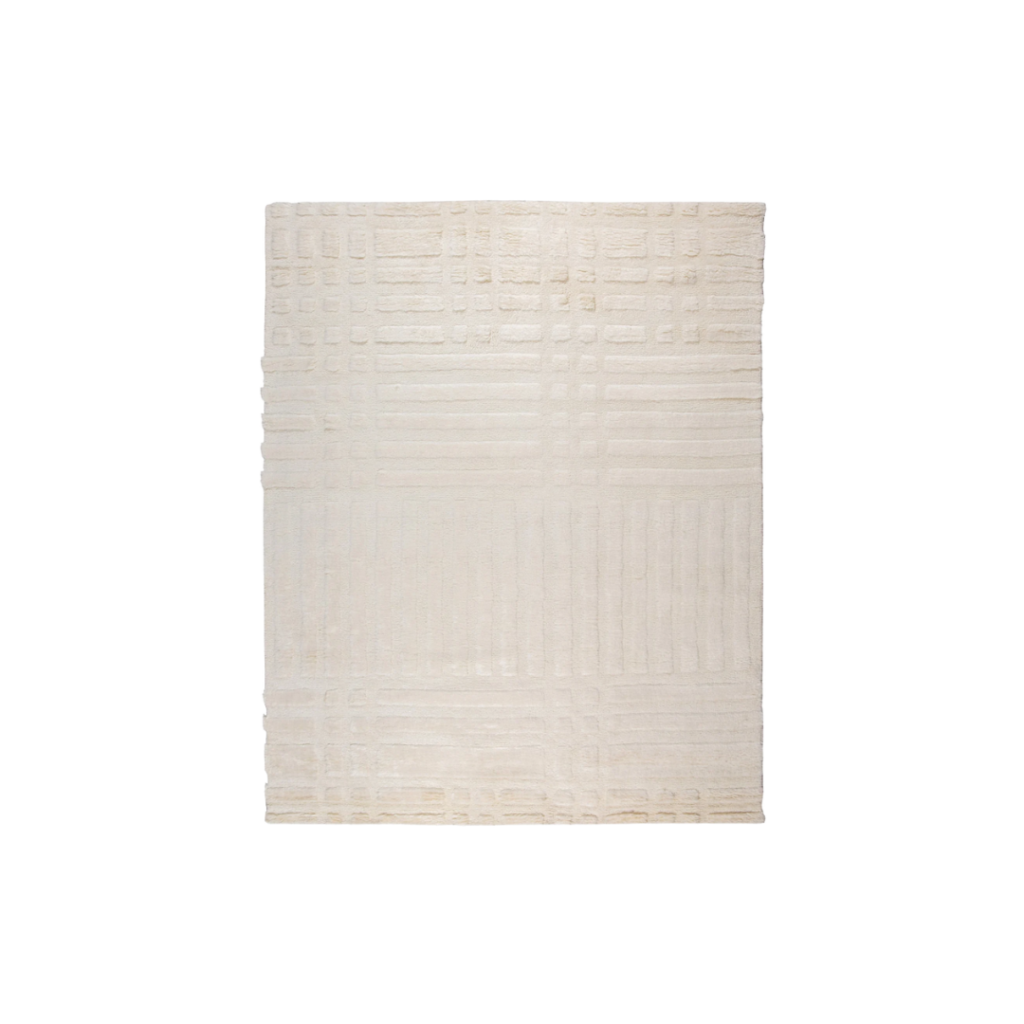
Nomad Random Grid Rug
Cadrys
With a sense of purposeful irregularity, the Nomad Random Grid Rug offers a contemporary lens on traditional weaving techniques. Hand-knotted in cream-toned wool, its freeform grid strikes a balance between precision and spontaneity — a tactile landscape that invites both visual and spatial calm. At once grounded and graphic, it’s the kind of piece that reshapes the tone of a room, designed for homes where every detail carries intention.

Goldie Bullion Throw Cushion
Studio Tali Roth
Goldie transcends the ordinary cushion, emerging as a sculptural artefact for the discerning interior. Woven from lustrous mercerised cotton, its tactile surface is punctuated by an audacious bullion fringe that commands attention without overwhelming. This piece navigates the space between bold texture and refined craftsmanship, perfect for interiors that balance personality with considered restraint.

Disderot, M4 Suspended Pendant Lamp
Dunlin
A sculptural icon of mid-century modernity, the Disderot Suspended M4 Lamp in Black is a study in restrained elegance and purposeful form. Crafted from sleek lacquered aluminum, its silhouette balances lightness and presence, casting a choreography of shadows and glow that animates any space. Adjustable and versatile, it transforms both dining and living areas into intimate sanctuaries, offering a celebration of craftsmanship and the poetry of functional design.

Vernier Round Side Table
Rachel Donath
The Vernier Round Side Table in Tabac is an exquisite dialogue between nature and craftsmanship. Satin-finished burlwood veneer wraps around its seamless curves, revealing a hidden interior that invites discovery and reverence. More than a surface, it offers a sculptural presence—an intimate stage for treasured objects, perfectly attuned to Australian interiors that prize subtle luxury and thoughtful restraint.

Timothy Oulton, Cabana Armchair
Coco Republic
The Cabana Armchair in Weathered Oak and Yeti Beige is a harmonious balance of rustic warmth and tactile softness. Its sculptural frame, fashioned from weathered oak, reveals a rich, organic grain that speaks to the passage of time, while the sumptuous New Zealand long-haired sheepskin in yeti beige envelopes the sitter in luxury. More than a chair, it is a place for lingering—where comfort and craft converge to transform any room into a serene refuge of understated elegance.
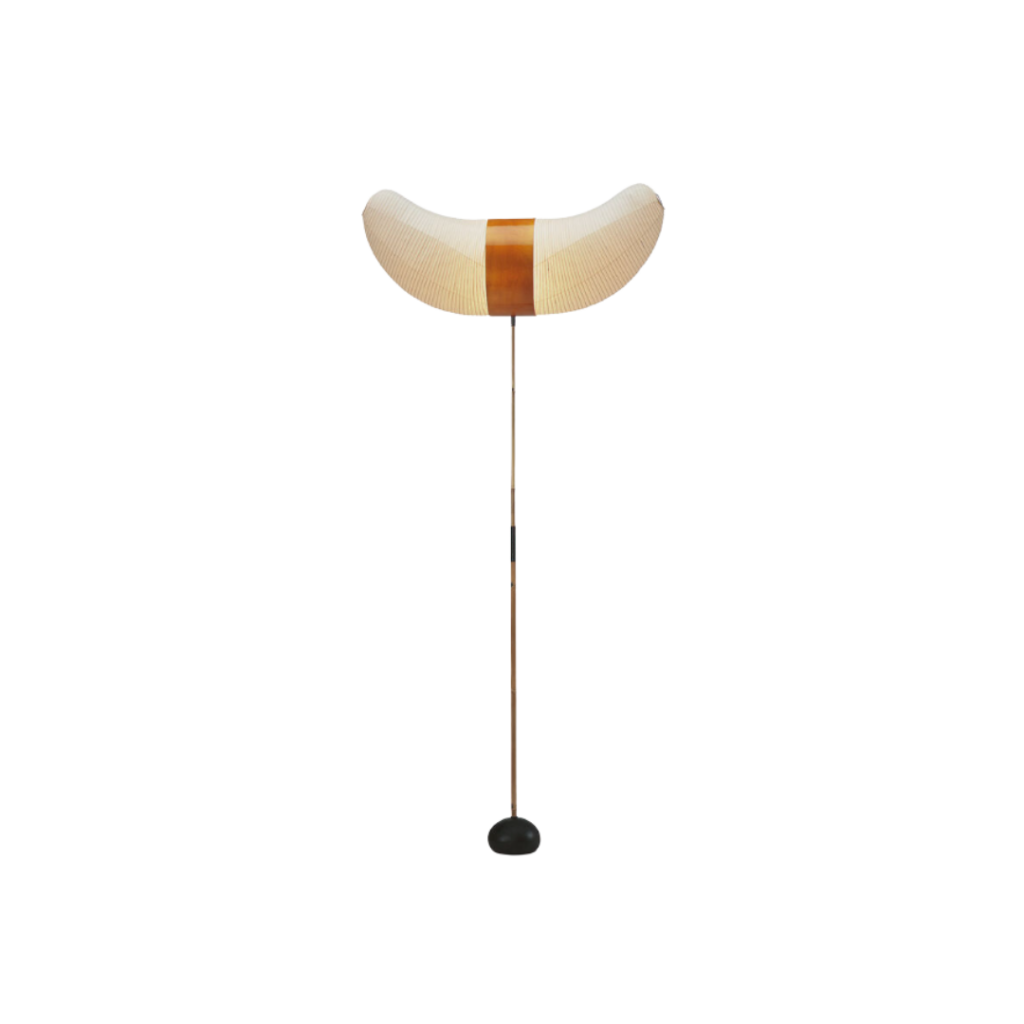
Vitra, Akari BB3-33S Floor Lamp
Living Edge
The Akari BB3-33S Floor Lamp, conceived by Isamu Noguchi in 1951, is a masterclass in understated elegance and poetic light. Handcrafted from delicate washi paper and bamboo, its sculptural form diffuses a gentle, ethereal glow that softly shapes the surrounding space. More than illumination, it is a tactile experience — where the interplay of shadow and light creates a sanctuary, inviting moments of calm and contemplation within refined Australian interiors.
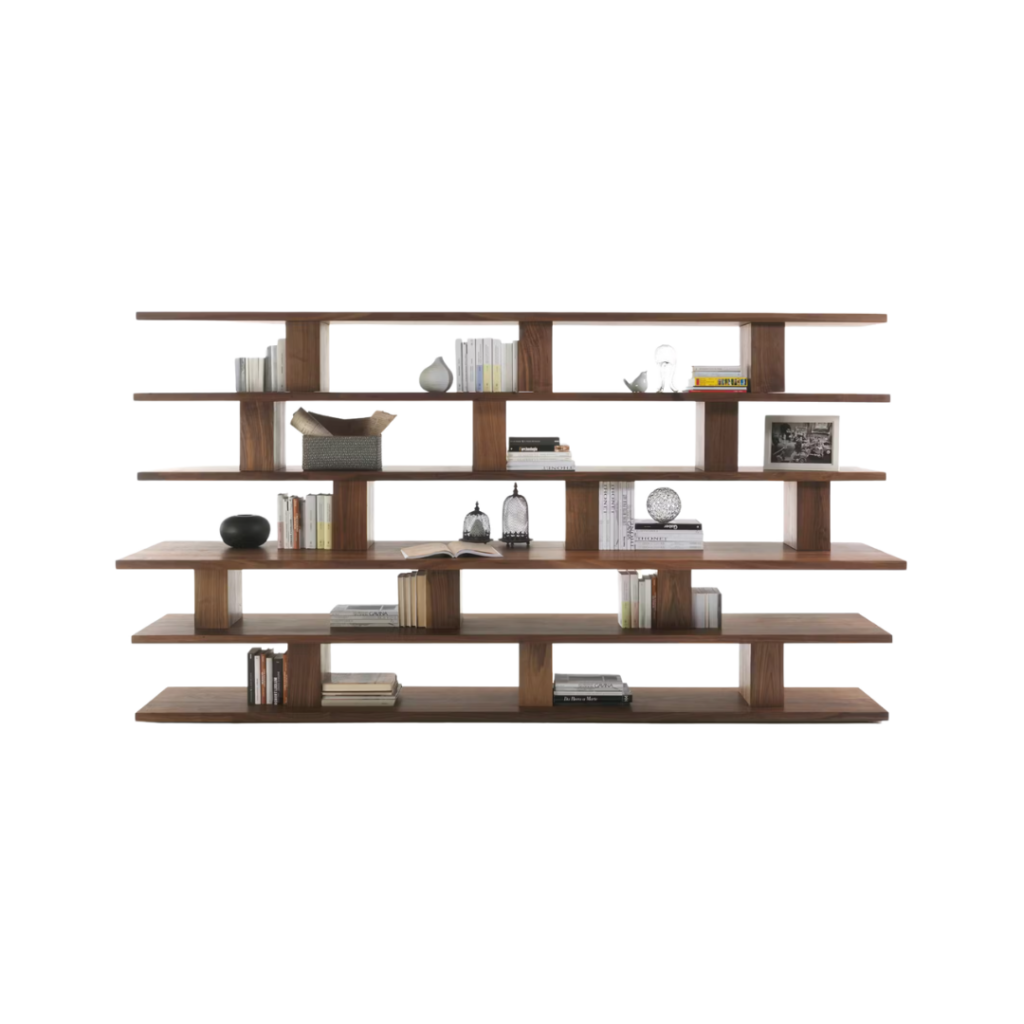
Riva1920, Bookshelf
Fanuli
The Bookshelf by David Chipperfield in flawless walnut is a sculptural foundation for the art of curation. Its seamless grain and warm, tactile surface invite the hand to linger, while its modular architecture offers adaptability — a structure designed not just to hold objects, but to frame the stories they tell. Whether standing proud as a room divider or resting against a wall, it elevates Australian interiors with a refined restraint that balances presence and poetry.

Brushed Herringbone Throw
West Elm
The Brushed Herringbone Throw in Cumin is a refined layering piece that marries tactile comfort with timeless pattern. Woven from a delicate blend of wool, acrylic, and polyester, its brushed surface invites moments of warmth and repose. The rich cumin tone — reminiscent of sunlit ochres — lends depth and a subtle vibrancy, transforming sofas and armchairs into curated havens where texture becomes a language of its own.

02 Valet Leather Coat Hook
MadeMeasure
The 02 Valet Leather Coat Hook balances sculptural restraint with tactile warmth, where supple Italian vegetable-tanned leather in British Tan curves gently against a matte black aluminium base. Hand-finished in Melbourne, it transforms a simple act — hanging a coat — into a moment of considered luxury. This understated accessory elevates hallways and walk in robes, marrying utility with craftsmanship in interiors that value the poetry of detail.

